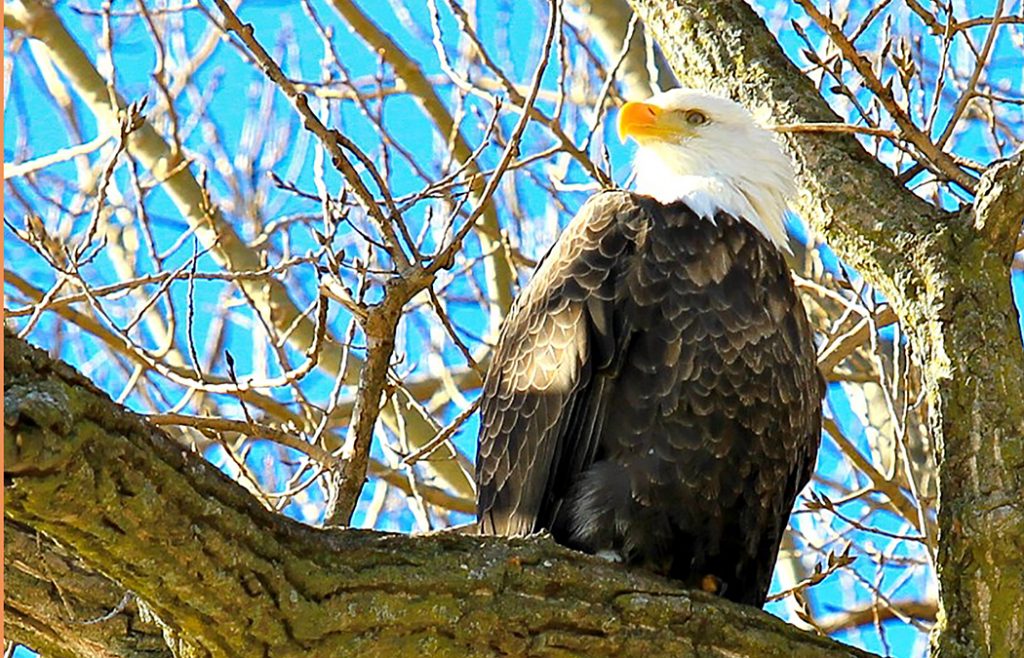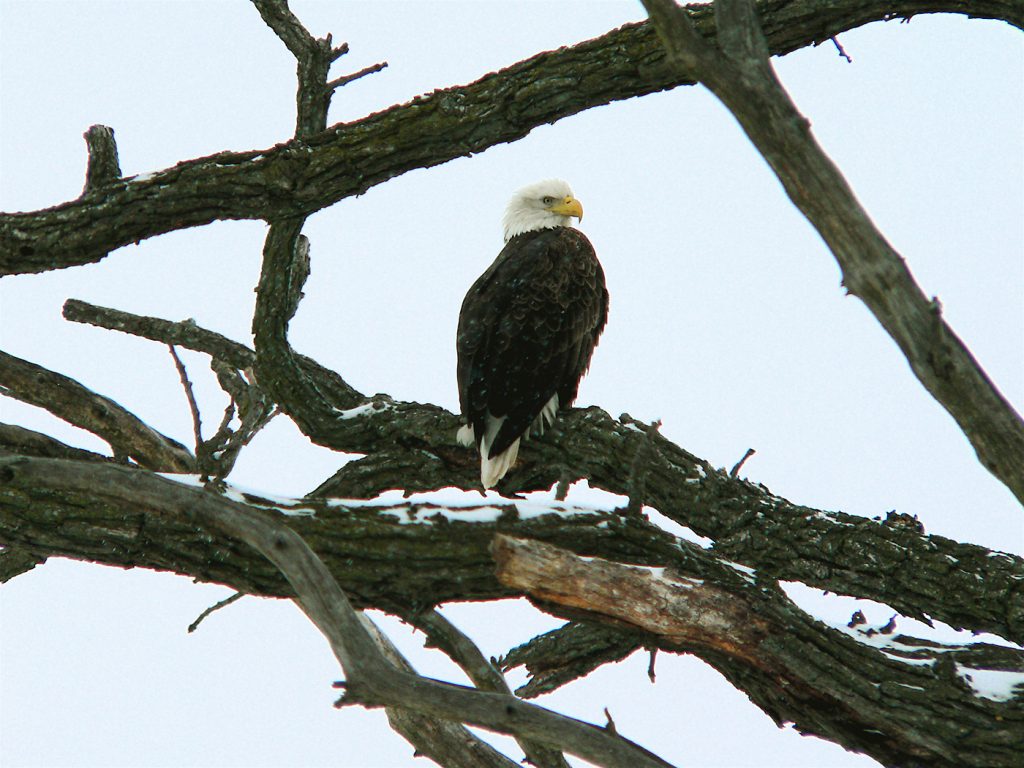
Each winter when the weather turns cold, the Quad Cities area hosts a large majority of bald eagles making their annual southern migration from Canada to the unfrozen waters of the Mississippi River.
Residents and visitors alike look to the skies to watch the eagles, easily identified by the white feathers of their heads and tails and their immense wingspans. A symbol of freedom and strength, and once on the brink of extinction, the bald eagles regularly awe visitors who line the banks of the Mississippi River on crisp, clear winter mornings.
Just down the river from Locks and Dams 14 and 15, these magnificent birds of prey gather along the wooded bluffs to spend the winter in the Quad Cities. The waters of the river remain unfrozen, fish is plentiful, and old-growth forests provide prime sites for perching and roosting.
The Quad Cities celebrates these transient residents each winter with a series of events, tours, and eagle watching opportunities.

Bald Eagle Days is the feature celebration on January 11–13, 2019, at the QCCA Expo Center located at 2621 4th Avenue in Rock Island, Illinois. It is the largest bald eagle event in the Midwest. Hours are Friday 4 p.m.–8 p.m., Saturday 10 a.m.–8 p.m., and Sunday 10 a.m.–5 p.m. Admission is $6 for adults and $1 for kids 6–15 years.
Thousands of residents and visitors turn out for the annual event, which includes live eagle programs and live bird of prey demonstrations, over 100 display booths, and a 20-foot climbing tower. Visit the spotting scopes set up and manned by the Quad City Audubon Society at Sunset Marina in Rock Island for a great eagle watching opportunity with free shuttle bus service from the Expo Center. For more information, visit QCAAExpoCenter.com.
The Mississippi River Visitor Center on Arsenal Island, between Davenport, Iowa, and Rock Island, Illinois, offers free eagle watches and Clock Tower tours on Saturdays and Sundays on January 19, 20, 26, 27, and February 2, 3, 9, 10 at 10 a.m. and 12 p.m. For required reservations, call (309) 794-5338. Their location is also good eagle viewing anytime. The Mississippi River Visitor Center is open Tuesday to Saturday 9 a.m. to 5 p.m. Please access Arsenal Island through the downtown Moline security gate; adults need a current U.S. picture ID. For more information, visit MissRiver.org.
There are also prime viewing locations in the area where you can go eagle watching on your own at any time. The Davenport, Iowa, and Rock Island, Illinois, riverfronts down river from Lock and Dam 15 offer frequent sightings. In addition, Sunset Park in Rock Island and Credit Island in Davenport also serve as prime viewing areas. Lock and Dam 14 at Pleasant Valley, Iowa, and Hampton, Illinois, is a great viewing spot. Last year on the Iowa side, two of the most popular roosting trees had to be cut down because they were storm-damaged and dying. Through an effort from the Quad-City Photography Club, MidAmerican Energy Co. installed three 40-foot eagle perches—almost artificial trees—in the fall in preparation for the winter eagle migration. New trees have been planted as well.
If you would like a guided tour, Quad Cities’ naturalist Bob Motz offers professional 2- to 3-hour tours. He guarantees eagle sightings to tour groups and offers a refund should his tour fail to produce any sightings. He has yet to refund money to his clients. Mr. Motz can be reached at (309) 269-3922.
The bald eagles seen in the Quad Cities are growing in number. In 2007, the eagle was removed from the list of threatened and endangered species.
The Quad Cities is located on the Mississippi River and is made up of the riverfront cities of Davenport and Bettendorf in Iowa, and Moline, East Moline, and Rock Island in Illinois. The region is just a 2-½ hour drive from Des Moines, Iowa, and Chicago, Illinois. It is easily accessible via I-80, I-74, I-88 and several major state highways.
